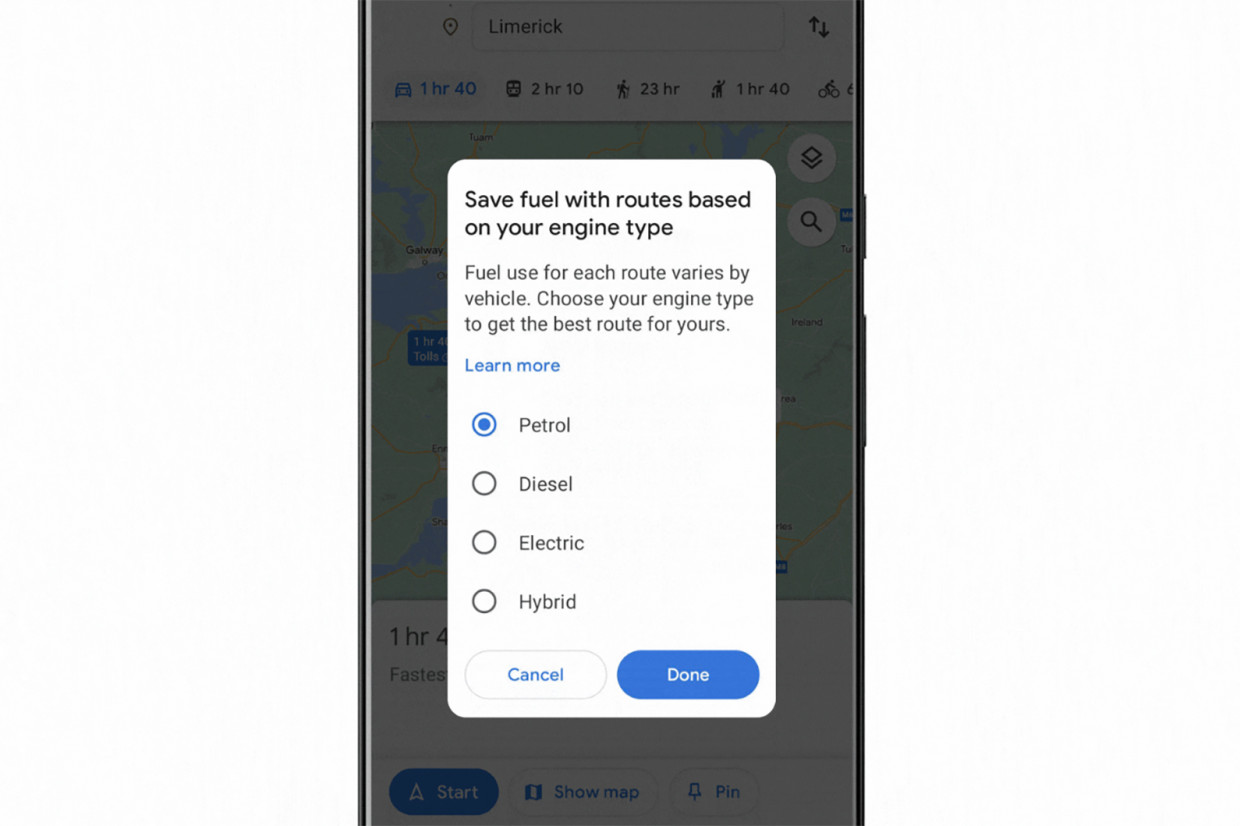
The fastest way to get somewhere isn’t always the best way – especially if you’re more concerned with efficiency as speed. And yet navigation services such as Google Maps have long been focused purely on getting you to your destination as quickly as possible.
That’s about to change, though: Google has just started rolling out a new Eco-friendly routing service across 40 European countries. Essentially, it will allow you to select your powertrain type – electric for us, of course – and then you’ll be offered the most fuel efficiency route to your destination.
The quickest route to e-mobility news: sign up for our FREE newsletter
Given the might not be the fastest it’s then left to you to choose: do you want to get home, say, 11 minutes earlier or get there with four per cent more battery life remaining?
Of course, this isn’t a new concept: various car manufacturers offer similar services in their own navigation systems. The navigation system in Volkswagen Group cars, for example, will even suggest where and for how long to charge your Volkswagen ID 5 on a journey for minimal downtime.
But given that a huge number of people prefer to use Google Maps for their navigation – either through Android Auto or Apple CarPlay, or one of those precarious-looking smartphone holders you stick on an air vent – it’s still significant that the mapping service is offering the feature.

It’s actually been available in the USA since last year, and will be rolled out across Google Maps in Europe in the coming months. When your software is updated to add it, you’ll be able to select it by going into Google Maps settings and turning it on in the navigation menu.
The option to select your powertrain type – with petrol, diesel, hybrid and EV choices – will be added in the coming weeks to optimise the mapping for the different fuel consumption patterns of each car.

Google says that the eco-friendly routing has been enabled by insights from the US Department of Energy’s National Renewable Energy Laboratory and the European Environment Agency. Data from those services is paired with Google Maps driving trends, and the firm then developed an advanced machine learning model.
Of course, for even better fuel consumption, you can leave the car behind entirely. Google Maps recently added more cycling route information to its system, including likely car traffic, steep hills and more information. It will also highlight rental e-scooter and e-bike options from compatible services.
READ MORE
Subscribe to the Move Electric newsletter
e-CARS
Video: Can the National Grid cope with a surge in electric vehicles?
e-BIKES
What to look for when buying an e-bike: Move Electric's top tips
The rise of Volt Bikes: 'when we launched, people thought we were mad'
e-MOTORBIKES
Maeving RM1 electric motorbike review
Q&A: Zapp founder on why electric mopeds are the future
Government plans 2035 ban on new non-zero emission motorbike sales
e-SCOOTERS
Tier to upgrade e-scooter fleet with a smart 'Parrot'
Q&A: Neuron Mobility's UK boss on e-scooters, safety and helmet selfies
e-WORLD
Polestar to supply battery tech to electric boat firm Candela
Engineering giant ABB working on electric Dover-Calais ferry
